I can’t count how many copies of Potential I have bought over the years: for me, friends, girlfriends, boyfriends, family.
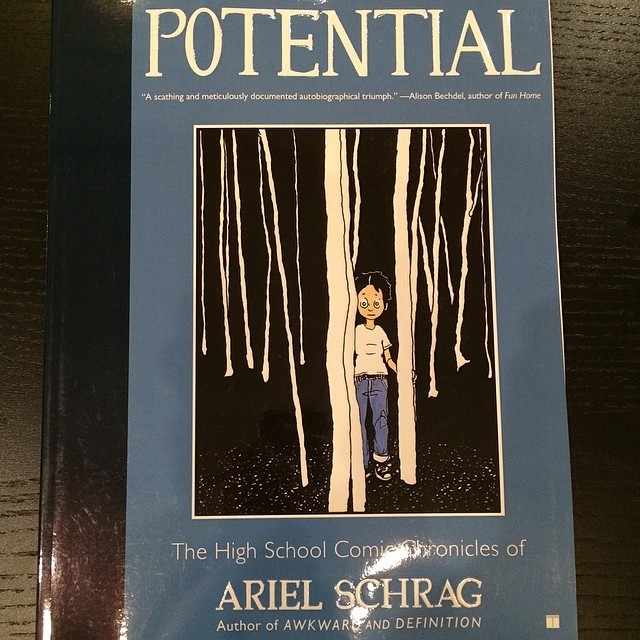
#notebook
08 I Watched the Film the Song Remains the Same.m4a
This song comes from Benji, which is a pretty good record. I like Mark Kozelek’s conversational way of telling stories. I like his easy-sounding but probably hard-won rhymes. The record has some songs I like and some songs I don’t. I can’t really say what the differences are.
In this song, I like the way the melody unexpectedly goes up when he sings, “But even more, I liked ‘No Quarter’”. But then it comes back down and the last three notes slip down on the single-syllable “hum”.
“And when we got the call that my grandmother passed. The nervous tension I’d been feeling for months broke and strangely, I laughed.” I like his honesty. I like his ability to mention something he doesn’t understand.
“I threw a punch that caught him off-guard and knocked him down.” I like how the “u” in “punch” seems to come out hollow from the back of his throat, from the place a hard “k” comes from.
#notebook
08 I Watched the Film the Song Remains the Same 2.m4a
This song comes from Benji, which is a pretty good record. I like Mark Kozelek’s conversational way of telling stories. I like his easy-sounding but probably hard-won rhymes. The record has some songs I like and some songs I don’t. I can’t really say what the differences are.
In this song, I like the way the melody unexpectedly goes up when he sings, “But even more, I liked ‘No Quarter’”. But then it comes back down and the last three notes slip down on the single-syllable “hum”.
“And when we got the call that my grandmother passed. The nervous tension I’d been feeling for months broke and strangely, I laughed.” I like his honesty. I like his ability to mention something he doesn’t understand.
“I threw a punch that caught him off-guard and knocked him down.” I like how the “u” in “punch” seems to come out hollow from the back of his throat, from the place a hard “k” comes from.
#notebook #medianotes
Bohren sound like schmaltzy lounge jazz: sultry saxophone, stately double bass. But they play at half speed. And there are lots of downward plunges in the tune that are more menacing than sexy. And there are great, wide spaces in the songs that only contain hisses and drones. The final effect is of standing in the French windows of a ballroom, an opulent party at your back, a valley filled with dawn fog to your front.
#notebook
Bohren sound like schmaltzy lounge jazz: sultry saxophone, stately double bass. But they play at half speed. And there are lots of downward plunges in the tune that are more menacing than sexy. And there are great, wide spaces in the songs that only contain hisses and drones. The final effect is of standing in the French windows of a ballroom, an opulent party at your back, a valley filled with dawn fog to your front.
#notebook #medianotes
BREADCRUMB TRAIL - THEATRICAL TEASER - YouTube
A documentary about Slint. I always knew they were young, but seeing that footage of them as kids playing Good Morning, Captain: holy shit.
Whatever you’re planning to do, get on with it.
#notebook
BREADCRUMB TRAIL - THEATRICAL TEASER - YouTube
A documentary about Slint. I always knew they were young, but seeing that footage of them as kids playing Good Morning, Captain: holy shit.
Whatever you’re planning to do, get on with it.
#notebook
On Sunday, my climbing took a step up. I’d been stuck on two V1+ problems for a couple of weeks. On Sunday, I completed both. One was a matter of improved technique, leaning hard into a series of sidepulls. The other, a matter of a dynamic lunge up to the final hold. I also completed a bonus V2.
I watched my friend, Zach, work on a V5. He tried a few times. Another group were working on the same problem. Zach would try, they would try, Zach would try, they would try. Each person’s attempt was informed by the attempts of the people before. One technique or approach would be answered or built on by the next. They collectively explored and discussed without ever saying anything. It was magic.
#notebook
On Sunday, my climbing took a step up. I’d been stuck on two V1+ problems for a couple of weeks. On Sunday, I completed both. One was a matter of improved technique, leaning hard into a series of sidepulls. The other, a matter of a dynamic lunge up to the final hold. I also completed a bonus V2.
I watched my friend, Zach, work on a V5. He tried a few times. Another group were working on the same problem. Zach would try, they would try, Zach would try, they would try. Each person’s attempt was informed by the attempts of the people before. One technique or approach would be answered or built on by the next. They collectively explored and discussed without ever saying anything. It was magic.
#notebook
A film about the experiments run at the Large Hadron Collider to find the Higgs-Boson. Too much human interest. Too little science. Pervasive meaningless animations. The lack of science in the film was best captured towards the end. One of the experiment directors gave a speech about the implications of their experimental findings. The audience of scientists were, judging by their expressions, fascinated. The audience of the film were not, because the speech was drowned out by music that the filmmakers added to the soundtrack.
#notebook
A film about the experiments run at the Large Hadron Collider to find the Higgs-Boson. Too much human interest. Too little science. Pervasive meaningless animations. The lack of science in the film was best captured towards the end. One of the experiment directors gave a speech about the implications of their experimental findings. The audience of scientists were, judging by their expressions, fascinated. The audience of the film were not, because the speech was drowned out by music that the filmmakers added to the soundtrack.
#notebook
This film comes from the same scene as Humpday and Your Sister’s Sister by Lynn Shelton. Mark Duplass, the co-writer and co-director of The Puffy Chair, stars in all three films. All three have the same aim: naturalistic portrayal of the subtleties of relationships.
I have been thinking a lot about the differences between the films. I can’t identify any. They are all shot the same way. There is an improvised, messy tone that is common to all the dialogue. They all have crucial, contrived elements that should derail the films completely (the brother in The Puffy Chair is a caricature, Humpday corners the two guys and makes them agree to have sex, Your Sister’s Sister herds three people into a remote cabin).
The thing is: Humpday and Your Sister’s Sister are marvellously truthy and moving and meaningful, and The Puffy Chair is not. I don’t know why.
#notebook
This film comes from the same scene as Humpday and Your Sister’s Sister by Lynn Shelton. Mark Duplass, the co-writer and co-director of The Puffy Chair, stars in all three films. All three have the same aim: naturalistic portrayal of the subtleties of relationships.
I have been thinking a lot about the differences between the films. I can’t identify any. They are all shot the same way. There is an improvised, messy tone that is common to all the dialogue. They all have crucial, contrived elements that should derail the films completely (the brother in The Puffy Chair is a caricature, Humpday corners the two guys and makes them agree to have sex, Your Sister’s Sister herds three people into a remote cabin).
The thing is: Humpday and Your Sister’s Sister are marvellously truthy and moving and meaningful, and The Puffy Chair is not. I don’t know why.
#notebook
Des Ark - house show (solo) - YouTube
I’ve posted this several times to my blog. I still find it meaningful: the setting, the song, the rendition of the song, the explanation.
#notebook
Des Ark - house show (solo) - YouTube
I’ve posted this several times to my blog. I still find it meaningful: the setting, the song, the rendition of the song, the explanation.
#notebook
This film had interesting themes. Collaborating on constructing the story of a time you shared with someone else. What it means to be a writer allowed to make up a story out of nowhere. The possibility for multiple, equally credible interpretations of a piece of art. The different ways your current self can inhabit your memories as you examine them: by acting differently, or saying different words, or changing what other people say or do.
Unfortunately, the way the film was constructed was so over-bearing, it was impossible to surrender to it. The insistent man: first nagging, then hectoring. The evasive apathy of the woman. The paused tableaus. The non-linear cuts. The repeated reformulations and reinterpretations of statements and events. It all served the themes, but the overall effect was of a dream. And dreams are boring because they make no sense. I wished the film had explored the same ideas, but in a simple, down-to-earth story.
My favourite part was the formalism of the garden mirrored the formalism of the film’s representations of people:
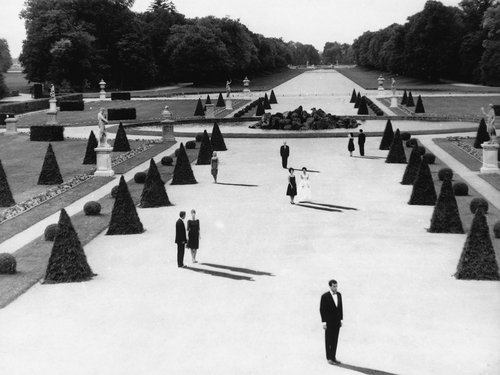
#notebook
This film had interesting themes. Collaborating on constructing the story of a time you shared with someone else. What it means to be a writer allowed to make up a story out of nowhere. The possibility for multiple, equally credible interpretations of a piece of art. The different ways your current self can inhabit your memories as you examine them: by acting differently, or saying different words, or changing what other people say or do.
Unfortunately, the way the film was constructed was so over-bearing, it was impossible to surrender to it. The insistent man: first nagging, then hectoring. The evasive apathy of the woman. The paused tableaus. The non-linear cuts. The repeated reformulations and reinterpretations of statements and events. It all served the themes, but the overall effect was of a dream. And dreams are boring because they make no sense. I wished the film had explored the same ideas, but in a simple, down-to-earth story.
My favourite part was the formalism of the garden mirrored the formalism of the film’s representations of people:
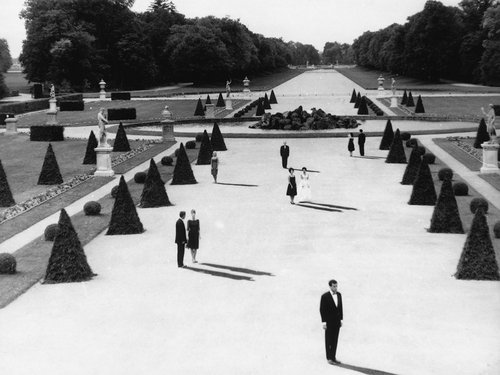
#notebook #medianotes
I find it difficult to bring myself to say anything about this game. It is, in essence, an interactive dream. It has the narrative discontinuities of a dream. The inexplicable feelings of a dream. And I mistrust anything I can’t explain, so I am tempted to suppress any praise of Thirty Flights of Loving.
But, through the things Colin Stetson says with his saxophone, and the things Jonathan Blow said about Buddhism and the moon and a pointing finger, and the things my friend, Joe, has said about learning to experience art through someone else’s perspective, I am learning to set aside my mistrust.
With that in mind, I can present the two pieces of Thirty Flights of Loving that I found moving, and I can side-step the desire to explain them or justify why they are good, or talk about their relationship to all the other bits of the game that I did not find moving.
Um, these are spoilers, I suppose.
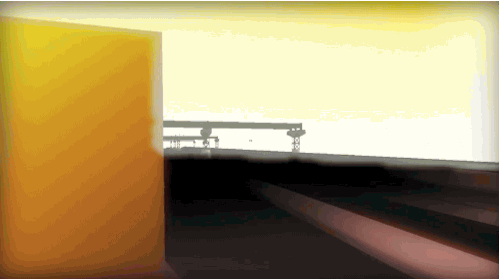
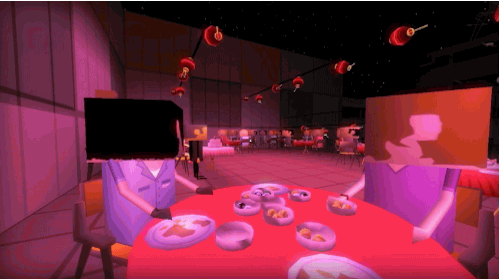
#notebook
I find it difficult to bring myself to say anything about this game. It is, in essence, an interactive dream. It has the narrative discontinuities of a dream. The inexplicable feelings of a dream. And I mistrust anything I can’t explain, so I am tempted to suppress any praise of Thirty Flights of Loving.
But, through the things Colin Stetson says with his saxophone, and the things Jonathan Blow said about Buddhism and the moon and a pointing finger, and the things my friend, Joe, has said about learning to experience art through someone else’s perspective, I am learning to set aside my mistrust.
With that in mind, I can present the two pieces of Thirty Flights of Loving that I found moving, and I can side-step the desire to explain them or justify why they are good, or talk about their relationship to all the other bits of the game that I did not find moving.
Um, these are spoilers, I suppose.
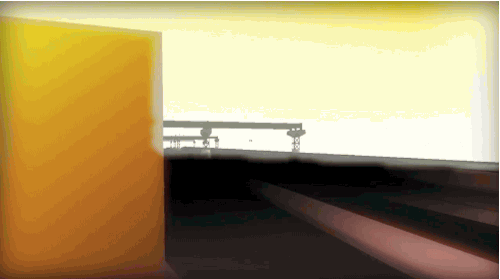
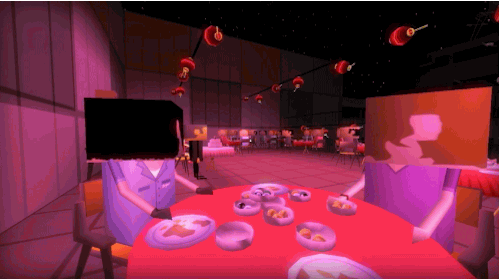
#notebook #medianotes
A documentary that follows Tim, an inventor, as he tries to paint his own version of The Music Lesson by Vermeer. His theory is that Vermeer used an optical device that places a mirror showing the subject over the canvas. This lets the painter compare the paint with the reflection of the subject side by side, so they can get the tone and texture just right.
Tim spends some time closing in on a replica of the optical device that Vermeer used. He makes a replica of the room that is depicted in The Music Lesson. This latter is the most interesting part of the film. He has a viola da gamba made. He builds the facade of a virginal. He turns the legs for a replica of the chair that sits in the foreground. He builds windows and fixes to them screens that show a view of Delft.
The film spends some time criticising the art historians who refuse to accept that Vermeer employed optical aids in his work. David Hockney is shown saying that this refusal betrays a simple-mindedness about what art really is.
The film shows a somewhat greater degree of insight. A man points out that Pieter de Hooch achieved somewhat similar looks without using optics. He credits Vermeer for his geometrical and symbolic compositions. But, ultimately, the film suffers from the same simple-mindedness as the historians. It positions Tim’s Vermeer as a successful replica of Vermeer’s Vermeer. It reduces Vermeer’s technique to the optics. But look for half a second and you see that the people in Tim’s Vermeer are a complete disaster.
#notebook
A documentary that follows Tim, an inventor, as he tries to paint his own version of The Music Lesson by Vermeer. His theory is that Vermeer used an optical device that places a mirror showing the subject over the canvas. This lets the painter compare the paint with the reflection of the subject side by side, so they can get the tone and texture just right.
Tim spends some time closing in on a replica of the optical device that Vermeer used. He makes a replica of the room that is depicted in The Music Lesson. This latter is the most interesting part of the film. He has a viola da gamba made. He builds the facade of a virginal. He turns the legs for a replica of the chair that sits in the foreground. He builds windows and fixes to them screens that show a view of Delft.
The film spends some time criticising the art historians who refuse to accept that Vermeer employed optical aids in his work. David Hockney is shown saying that this refusal betrays a simple-mindedness about what art really is.
The film shows a somewhat greater degree of insight. A man points out that Pieter de Hooch achieved somewhat similar looks without using optics. He credits Vermeer for his geometrical and symbolic compositions. But, ultimately, the film suffers from the same simple-mindedness as the historians. It positions Tim’s Vermeer as a successful replica of Vermeer’s Vermeer. It reduces Vermeer’s technique to the optics. But look for half a second and you see that the people in Tim’s Vermeer are a complete disaster.
#notebook
Catherine Destivelle - amazing solo climb in Mali - YouTube
That moment where she can’t mount the overhang.
My dad said he saw this on TV in the seventies and he had to watch it lying on the floor.
#notebook
Catherine Destivelle - amazing solo climb in Mali - YouTube
That moment where she can’t mount the overhang.
My dad said he saw this on TV in the seventies and he had to watch it lying on the floor.
#notebook
Pete Hunt: React: Rethinking best practices -- JSConf EU 2013 - YouTube
A great presentation about a very exciting JavaScript framework. I love how there seems to be almost nothing to React.
#notebook
Pete Hunt: React: Rethinking best practices -- JSConf EU 2013 - YouTube
A great presentation about a very exciting JavaScript framework. I love how there seems to be almost nothing to React.
#notebook
“When the passion is too much to talk, sing. When the passion is too much to sing, dance.”
#notebook
“When the passion is too much to talk, sing. When the passion is too much to sing, dance.”
#notebook
08 The Winner Takes It All.mp3
This song was written by Björn Ulvaeus and Benny Andersson and sung by Agnetha Fältskog. They all deny that the words are about Ulvaeus’s and Fältskog’s divorce, saying the words describe any divorce.
It is sort of tempting to delight in the magical brutality of an ex-husband writing a song from the perspective of his ex-wife about their divorce, and then getting her to sing it. But, this temptation comes from a desire to see life as harsher and more beautiful and more coherent than it really is.
It seems more likely that Ulvaeus took the fact of his own divorce and emphasised it to produce an exquisitely beautiful pain.
The words are sometimes laughable (“Their minds as cold as ice”) and occasionally meaningful (“Building me a fence. Building me a home.”) They serve chiefly to give you a few emotional reference points. The music takes these and develops them into something far bigger and more moving. Especially the last chorus where Fältskog sings “The winner takes it all” in the ordinary way, and then sings it again, one tone higher.
#notebook
08 The Winner Takes It All 2.mp3
This song was written by Björn Ulvaeus and Benny Andersson and sung by Agnetha Fältskog. They all deny that the words are about Ulvaeus’s and Fältskog’s divorce, saying the words describe any divorce.
It is sort of tempting to delight in the magical brutality of an ex-husband writing a song from the perspective of his ex-wife about their divorce, and then getting her to sing it. But, this temptation comes from a desire to see life as harsher and more beautiful and more coherent than it really is.
It seems more likely that Ulvaeus took the fact of his own divorce and emphasised it to produce an exquisitely beautiful pain.
The words are sometimes laughable (“Their minds as cold as ice”) and occasionally meaningful (“Building me a fence. Building me a home.”) They serve chiefly to give you a few emotional reference points. The music takes these and develops them into something far bigger and more moving. Especially the last chorus where Fältskog sings “The winner takes it all” in the ordinary way, and then sings it again, one tone higher.
#notebook #medianotes
Destiny's Child - Say My Name (Cyril Hahn Remix).mp3
#notebook
Destiny's Child - Say My Name (Cyril Hahn Remix) 2.mp3
#notebook #medianotes
The North Face: Alex Honnold - El Sendero Luminoso - YouTube
#notebook
The North Face: Alex Honnold - El Sendero Luminoso - YouTube
#notebook
30dez13 - Robert Henke (english subtitles) on Vimeo
“I try to be more structured in my approach. Because I want to avoid the great danger of being arbitrary. Let’s say this is pretty and this is pretty, and this and this. I’ll combine them. You can do that for one album, but if you do it for your entire career, I think the chance is relatively big that you’re producing an arbitrary output of exchangeable stuff. So I try to find a context of some sort into which I can put my own creation while I’m creating it. This context then becomes an auxiliary construction which excludes certain things.”
“With music I’m primarily interested in timbre. What does it sound like? Which overtones happen when and why? And then there is rhythm. And then nothing for a long time.”
“I remember creating a piece at some point. It was a Saturday or Friday night. I finished it at two a.m. I put it on a DAT tape, put my portable DAT recorder under my arm, went to Panasonic, said hello to Mo and Kotai, and bang! the track was playing. I never wondered if this would work at Berghain at three a.m.”
#notebook
30dez13 - Robert Henke (english subtitles) on Vimeo
“I try to be more structured in my approach. Because I want to avoid the great danger of being arbitrary. Let’s say this is pretty and this is pretty, and this and this. I’ll combine them. You can do that for one album, but if you do it for your entire career, I think the chance is relatively big that you’re producing an arbitrary output of exchangeable stuff. So I try to find a context of some sort into which I can put my own creation while I’m creating it. This context then becomes an auxiliary construction which excludes certain things.”
“With music I’m primarily interested in timbre. What does it sound like? Which overtones happen when and why? And then there is rhythm. And then nothing for a long time.”
“I remember creating a piece at some point. It was a Saturday or Friday night. I finished it at two a.m. I put it on a DAT tape, put my portable DAT recorder under my arm, went to Panasonic, said hello to Mo and Kotai, and bang! the track was playing. I never wondered if this would work at Berghain at three a.m.”
#notebook
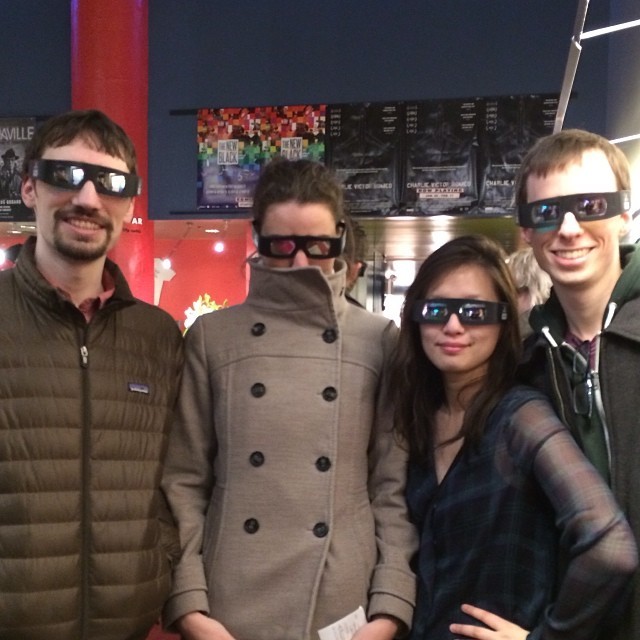
Everyone has their 3D glasses ready for Charlie Victor Romeo. I thought the mention of 3D in the trailer was a joke.
#notebook
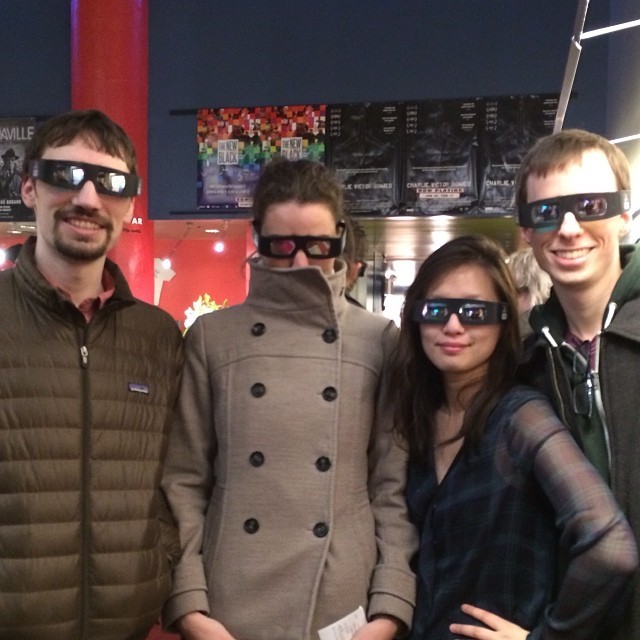
Everyone has their 3D glasses ready for Charlie Victor Romeo. I thought the mention of 3D in the trailer was a joke.
#notebook
It is trite to say that Hollywood romances are trite. One of the interesting things they tell us is how little story matters, but how important narrative is. Stories are just events and causality. Narratives are meaning. The director can make meaning from the exciting new person, the reliable ex, a character’s sacrifice of their ideals for their beloved, a character staying true to themselves. And, really, when we say “meaning”, we are talking about order. Things being as they should be.
What Hollywood can’t do is complexity. Perfection, in whatever event it is found, must be simple. Two lovers must be of one mind as they turn together into their shared, final moment. All idealised romances peak in a perfect moment and then end. That moment might be eternal, but there are definitely no new moments afterwards. If you don’t stop the story, you have to return to imperfection.
I find the complexity in indie movies. Your Sister’s Sister. Humpday . And, now, Drinking Buddies.
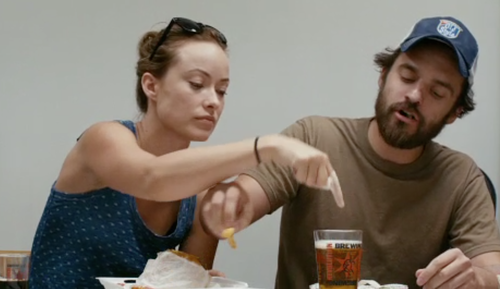
It’s just about a man and a woman who are friends and who kind of fancy each other. It’s about what might have been. It’s about flirting, but always maintaining deniability. It’s about physical affection that is both sexual and not meant to go anywhere.
#notebook
It is trite to say that Hollywood romances are trite. One of the interesting things they tell us is how little story matters, but how important narrative is. Stories are just events and causality. Narratives are meaning. The director can make meaning from the exciting new person, the reliable ex, a character’s sacrifice of their ideals for their beloved, a character staying true to themselves. And, really, when we say “meaning”, we are talking about order. Things being as they should be.
What Hollywood can’t do is complexity. Perfection, in whatever event it is found, must be simple. Two lovers must be of one mind as they turn together into their shared, final moment. All idealised romances peak in a perfect moment and then end. That moment might be eternal, but there are definitely no new moments afterwards. If you don’t stop the story, you have to return to imperfection.
I find the complexity in indie movies. Your Sister’s Sister. Humpday . And, now, Drinking Buddies.
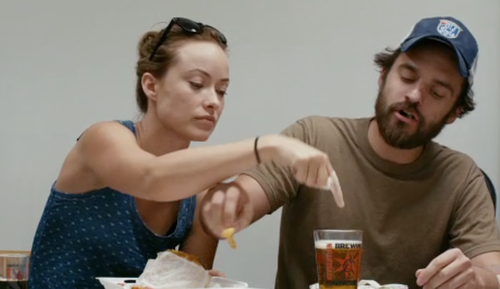
It’s just about a man and a woman who are friends and who kind of fancy each other. It’s about what might have been. It’s about flirting, but always maintaining deniability. It’s about physical affection that is both sexual and not meant to go anywhere.
#notebook #medianotes
I saw this at Film Forum. It was gorgeous.
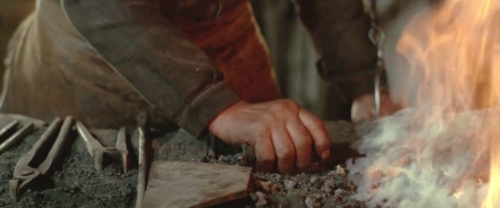
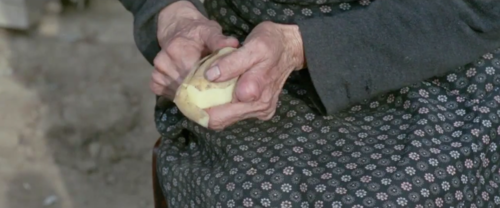
It’s a documentary about an old couple who live on a farm. He is a blacksmith, she tends to the animals and cooks and cleans.
There are many fascinating details. The axel above the well that has been worn away in the middle by decades of winching up buckets of water. The huge bellows for the blacksmith’s fire, the leather more patch that not. The way the fire is lit. The way the metal is heated and worked. The wine kept in a barrel in an outhouse.
The husband and wife say almost nothing, besides remarks about the good coffee or requests for errands in the town.
The film looks very beautiful. The fields. The orange of the fire. The rich grey of the stone. In a way, it is too beautiful. What is probably a life with many privations is shown as a gilded communion with nature.
Half way through the film, you realise you haven’t seen the wife for a while. Now, based upon what you know of the couple, it is unlikely she has gone for a week away with the girls, or run off with another man. There is only one possible explanation for her absence: she is dead. Nothing is said. There is no voiceover to explain. There is just the man cooking. The man sewing on a button. The man fluffing the pillows on the bed.
#notebook
I saw this at Film Forum. It was gorgeous.

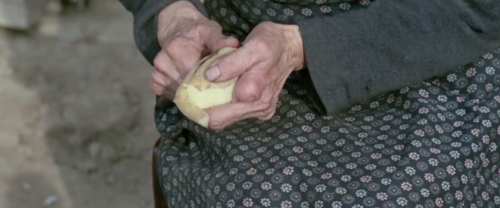
It’s a documentary about an old couple who live on a farm. He is a blacksmith, she tends to the animals and cooks and cleans.
There are many fascinating details. The axel above the well that has been worn away in the middle by decades of winching up buckets of water. The huge bellows for the blacksmith’s fire, the leather more patch that not. The way the fire is lit. The way the metal is heated and worked. The wine kept in a barrel in an outhouse.
The husband and wife say almost nothing, besides remarks about the good coffee or requests for errands in the town.
The film looks very beautiful. The fields. The orange of the fire. The rich grey of the stone. In a way, it is too beautiful. What is probably a life with many privations is shown as a gilded communion with nature.
Half way through the film, you realise you haven’t seen the wife for a while. Now, based upon what you know of the couple, it is unlikely she has gone for a week away with the girls, or run off with another man. There is only one possible explanation for her absence: she is dead. Nothing is said. There is no voiceover to explain. There is just the man cooking. The man sewing on a button. The man fluffing the pillows on the bed.
#notebook #medianotes
songsohia-farewelltransmission.mp3
The album from which this is taken, The Magnolia Electric Co ., has been part of the soundtrack to winter, washing-up and walks to the cinema.
#notebook
songsohia-farewelltransmission 2.mp3
The album from which this is taken, The Magnolia Electric Co ., has been part of the soundtrack to winter, washing-up and walks to the cinema.
#notebook #medianotes
I like the way Karin Dreijer Andersson’s voice changes from female-sounding to male-sounding. I like the way the second voice joins in, like one runner falling into step with another. I like the way this is, really, a commercial dance track, but queer.
The album is a little too diffuse. The latest Chromatics album wanders down a similar path, but retains its shape because, really, it goes in one direction for a while, then resolutely heads off into the wilderness. Shaking the Habitual doesn’t quite keep it together because it has a twenty-minute atmospheric in the middle and then fails to regain a direction.
#notebook
I like the way Karin Dreijer Andersson’s voice changes from female-sounding to male-sounding. I like the way the second voice joins in, like one runner falling into step with another. I like the way this is, really, a commercial dance track, but queer.
The album is a little too diffuse. The latest Chromatics album wanders down a similar path, but retains its shape because, really, it goes in one direction for a while, then resolutely heads off into the wilderness. Shaking the Habitual doesn’t quite keep it together because it has a twenty-minute atmospheric in the middle and then fails to regain a direction.
#notebook #medianotes